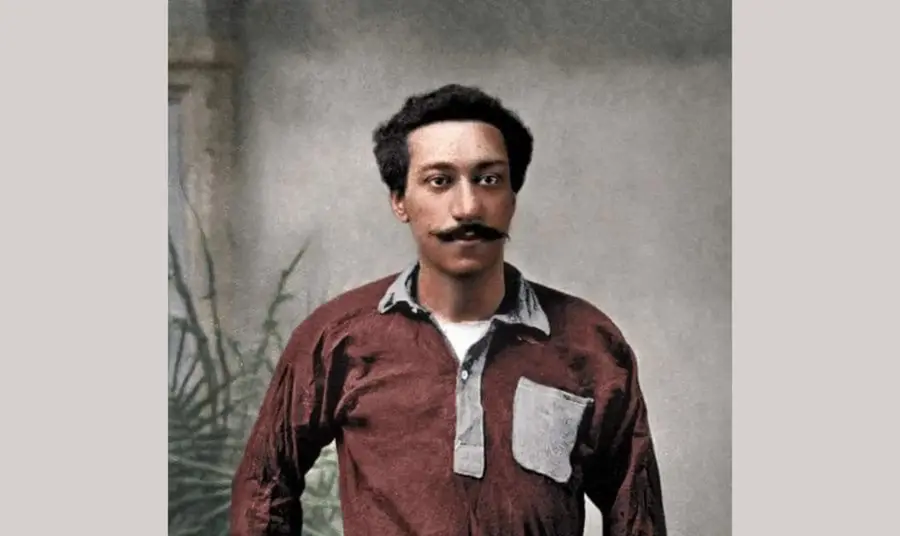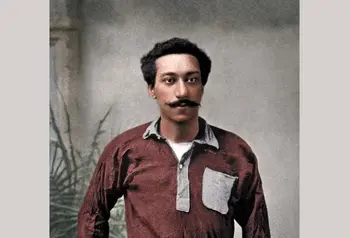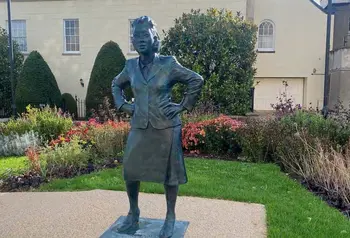Shining a light on Arthur Wharton: the first black professional footballer

“There’s a buzz around Arthur’s story at the moment,” Mike says, the day after he attended an event at parliament hosted by the Arthur Wharton Foundation to celebrate trailblazing people of colour in sport.
We awarded £7,700 for a short film telling the footballer’s story called A Light That Never Fades. Derek Griffiths MBE portrays Arthur near the end of his life in a fictionalised moment when former teammates visit him, prompting him to reflect on his legacy and the struggles he faced as a person of colour in Victorian England.
Mike says: “We’re putting the final touches to the film, but the early reaction has been great. People are eager to see more and talk about Arthur’s legacy.”
Who was Arthur Wharton?
Arthur ‘Kwame’ Wharton is widely recognised as the UK’s first black professional footballer. Born in Jamestown, Ghana in 1865, his parents were a Grenadian-Scottish missionary and a member of Ghanian Fante royalty. He moved to the UK in 1883 to train as a missionary at Cleveland College in Darlington, and soon after began playing for Darlington FC as a goalkeeper.
Arthur was part of the Preston North End team that reached the FA Cup semi-finals in 1886–87, and was the first black man in the First Division when he played for Sheffield United during the 1894–95 season.

He was also a professional cricketer, cycling champion and rugby player. In July 1886 he became the first official fastest man when he ran the 100-yard sprint in 10 seconds, a record unchallenged for 30 years.
Arthur was a pioneer, but he wasn’t alone. Black players have been rediscovered elsewhere in football history, such as Andrew Watson who captained Scotland’s victory over England in 1881.
Shining light on a forgotten black story
“He was a light for black sportsmen well ahead of his time,” says Mike, “but his story ended sadly and in obscurity.”
Arthur’s fame began to fade when he left professional football in 1902, taking up work as a miner in Yorkshire but keeping up his involvement in cricket. In 1930, Arthur died penniless in the Springwell Sanatorium in Balby and was buried in an unmarked grave in Edlington Cemetery.
It wasn’t until 1997 that Arthur’s grave was given a headstone and his story began to be championed by Shaun Campbell, founder of the Arthur Wharton Foundation.
Empathy and accuracy were essential in telling Arthur’s story
Mike acknowledges the limits of his perspective as a white filmmaker but says advice from collaborators with lived experience has been invaluable in helping him to be as empathetic and authentic as possible.
“We used historically accurate racial language, such as newspaper headlines from the time about Arthur. It’s uncomfortable, but we can’t tell his story accurately without them."
Early drafts of the script had Arthur accept the apologies of former teammates for the racism he’d faced, but feedback from writer Ishy Din helped Mike see this moment needed to be altered.
“It became clear that the tone was far too sweet. Arthur’s rejection of those apologies is now a powerful point in the film. It’s a moment of quiet reckoning with the pain of the past that will affect everyone who watches.”

Black players have always been part of football’s history
Mike expects the film to launch in early 2025 and hopes to screen it at film festivals and on streaming platforms. The Arthur Wharton Foundation will show it in schools, colleges and community hubs to encourage conversations on race and black heritage.
The film tells a nuanced story about a black man who touched both the highs of setting a world record and the lows of destitution. Clubs and teammates spotted Arthur’s talent, accepting him as one of the team, but stood by when he was described in the press using racial slurs.
While football is now more diverse than ever, players of colour still face racism. Remembering Arthur’s story helps us see how far we’ve come while reminding us we all still have work to do to create an equitable society where people’s differences and heritage are valued.
Explore more heritage stories
Sign up for our email newsletter to hear more about the projects we fund and get tips to improve your application.


